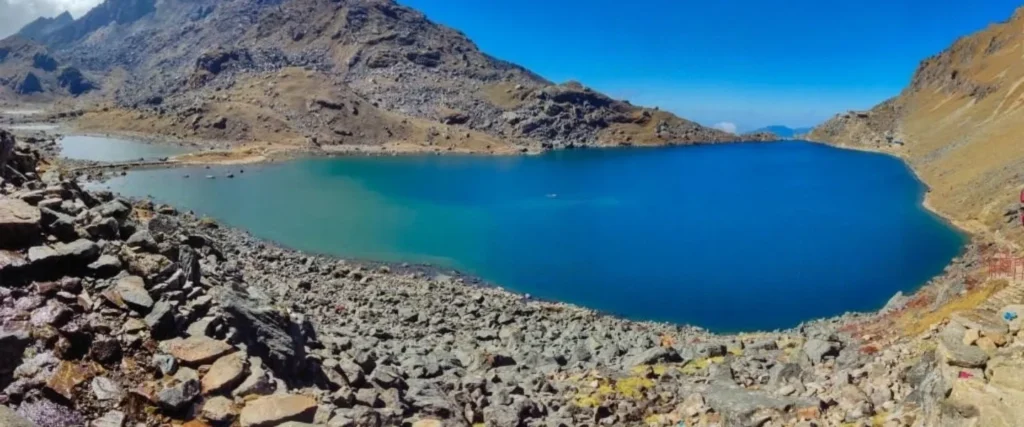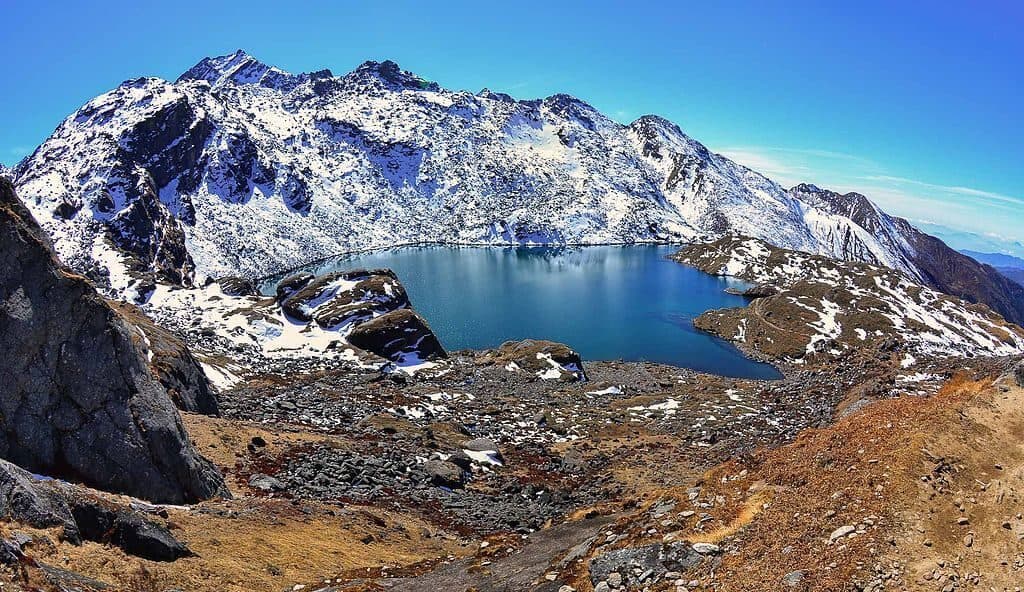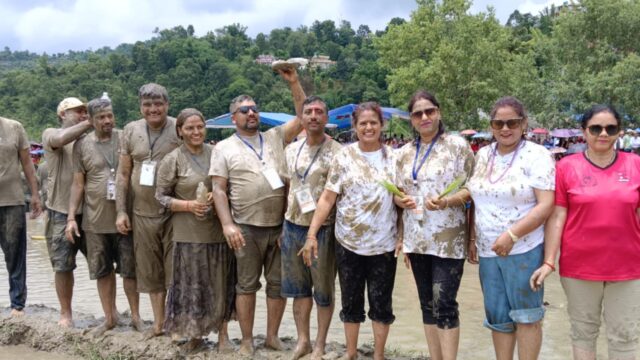Pilgrims and devotees from across the country and beyond have started their journey to the sacred alpine lake of Gosainkunda, as the much-awaited Ganga Dussehra fair is set to commence on May 27. The spiritual fair, organized annually at one of Nepal’s most revered pilgrimage sites, will continue until Ekadashi, which falls on June 7 this year.
According to the Gosainkunda Area Development Committee, the 10-day religious event is expected to attract over 5,000 devotees, who will trek through the highland trails of Rasuwa to bathe in the holy Gosainkunda pond, situated at an altitude of 4,380 meters above sea level. The lake is regarded as one of the most sacred destinations in Nepal, especially for followers of the Hindu faith, who believe that taking a holy dip here washes away sins and fulfills spiritual aspirations.
Traditional Routes and Pilgrim Flow
Pilgrims typically begin their journey from Dhunche, the district headquarters of Rasuwa, and proceed through scenic yet demanding trails that pass via Tiwari Bagar, Khanti, Deurali, Dimsa, and Cholangpati before reaching the sacred lake. The trail not only offers spiritual fulfillment but also provides a unique experience of Nepal’s alpine landscape, rich in natural beauty and cultural heritage.
The Nepal Police has confirmed that more than 250 devotees affiliated with the Patanjali Yoga Committee have already departed for Gosainkunda this morning. These early arrivals mark the beginning of what is expected to be a significant spiritual congregation.

Sacred Significance
Gosainkunda holds immense religious significance in Hindu mythology. According to legend, it is believed to have been created by Lord Shiva himself. It is said that after consuming poison during the churning of the cosmic ocean (Samudra Manthan), Lord Shiva struck the mountain with his trident to draw water and cool his throat, thus forming the sacred lake.
Many Hindus believe that visiting Gosainkunda at least once in a lifetime is a spiritual obligation. The site also serves as a pilgrimage destination during Janai Poornima, a separate festival when another five-day fair is organized, drawing thousands of worshippers.
Preparations and Arrangements
The Gosainkunda Area Development Committee, in coordination with local authorities, security forces, and volunteers, has made preparations to ensure a safe and organized fair. With increasing numbers of pilgrims expected in the coming days, arrangements have been made for lodging, food, and basic medical services along the trekking routes. Temporary shelters and resting spots have also been set up for the convenience of the pilgrims.
Security has been tightened, and additional Nepal Police personnel have been deployed to manage the crowd and ensure the safety of travelers. Given the altitude and remote terrain, authorities have also advised pilgrims to prepare adequately for the trek, especially in terms of health, food supplies, and warm clothing.

Boost to Religious Tourism
The Ganga Dussehra fair is not only a religious event but also a significant driver of tourism in the Langtang National Park region. The influx of domestic and international visitors during this period provides a welcome boost to the local economy, especially for businesses in Dhunche and other stopover points along the route.
Hoteliers, porters, and local vendors benefit from the surge in pilgrims, and the event helps promote Nepal’s high-altitude pilgrimage circuits as attractive destinations for spiritual tourism. The fair also serves as a platform to promote local culture and traditions of the Tamang and other ethnic communities living in the Rasuwa region.
Call for Conservation and Infrastructure Development
While the event is spiritually enriching and economically beneficial, it also brings challenges related to waste management, environmental protection, and infrastructure limitations. Local authorities and conservation groups have urged pilgrims to maintain cleanliness and follow eco-friendly practices, especially as Gosainkunda lies within a sensitive ecological zone.
There have been calls for more sustainable development in the region, including improved sanitation facilities, waste disposal systems, and better emergency services to accommodate the growing number of visitors in future years.





